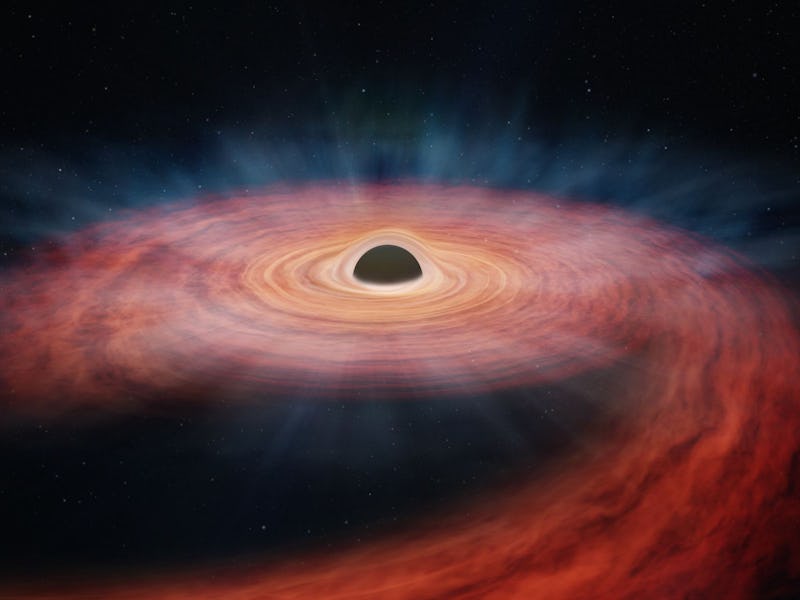Astronomers Are Watching a Black Hole Shred a Star to Pieces
It’s not eating the star delicately.

When a black hole consumes a star, things can get quite messy. Take, for example, the event known as ASASSN-14li, where a massive star strayed too close to a supermassive black hole and paid the ultimate price.
There are two main dangers posed by a black hole. The first is that they possess an event horizon. Mass curves, space, and black holes contain so much mass in such a small space that spacetime folds into itself, creating a cosmic trap. Anything that crosses the event horizon is lost forever. The second is the threat of tidal forces.
When a body approaches a dense mass such as a planet, star, or black hole, the part closest to the mass is pulled slightly more strongly than the part of you furthest from the mass. Gravity tries to squeeze the body into an oval or egg shape rather than a sphere. Since these forces between the Earth and the Moon are what cause ocean tides, they are known as tidal forces. Normally, tidal forces are rather small, but near dense massive objects such as a black hole, the tidal forces can be so powerful they can rip apart objects, causing what is known as a tidal disruption event (TDE).
When a star approaches a black hole, tidal forces typically rip the star apart well before it reaches the event horizon. How much of the star is consumed by the black hole then depends on the original trajectory of the star. In the case of ASASSN-14li, most of the star wasn’t consumed by the black hole. The TDE ripped the star apart and superheated its remains, which emitted powerful X-rays and ultraviolet light. While this was bad news for the star, it was great news for astronomers.
NASA’s Chandra X-ray Observatory and ESA’s XMM-Newton telescope both captured the X-ray spectra of the event, and further observations from other observatories provided UV spectra. Together, this gave astronomers a detailed look at the composition of the doomed star. In this recent work, the team was able to analyze the spectra of both the material captured in orbit around the black hole and gasses that streamed away from the black hole. By comparing things such as the abundances of nitrogen and carbon in the stellar debris, the team was able to confirm the star had a mass of about 3 Suns.
Earlier this year, astronomers observed another TDE named Scary Barbie, which could have been a 14 solar mass star, but this estimate is based on the overall brightness of the event, not its spectra. ASASSN-14li is currently the largest TDE with a confirmed mass.
This event is a powerful example of how stars near a supermassive black hole. With further events, we may even be able to study the clustering of stars around supermassive black holes in other galaxies, which would help us understand how the central cores of galaxies can evolve and the role they play in stellar evolution.
This article was originally published on Universe Today by Brian Koberlein. Read the original article here.